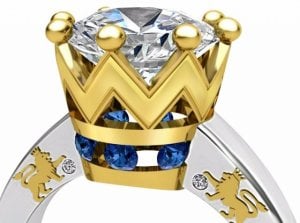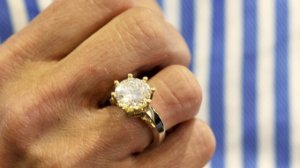- Joined
- Mar 2, 2013
- Messages
- 6,307
I know this discussion has been had a few times, and I have read some of those threads; but they largely were after-the-fact allegations, and they usually turned into whizzing contests and designer popularity contests; that horse has been beat pretty dead, so hopefully this doesn't go 'there' or target any specific jeweler or consumer.  Also, let's assume that it's generally understood that if you ARE looking to 'copy' a design, you should go to the original designer for ethical/copyright purposes, assuming you know who that designer is, of course.
Also, let's assume that it's generally understood that if you ARE looking to 'copy' a design, you should go to the original designer for ethical/copyright purposes, assuming you know who that designer is, of course.
Here, I would like to proactively discuss and understand specifically - when a non-trade consumer is in the 'conceptual phase' of a project (e.g. just bought a stone, churning through ideas, browsing Pinterest and "show me" threads, coming up with their 'vision', etc.) - what is considered 'generally acceptable' in terms of differences where one (or more) pieces truly 'inspire' a new piece vs 'copy' one. I've read there is a rough percentage in differences (I forget what that was ... 10% or 20%?), but I'm not clear on what exactly those 'differences' comprise and how they add up.
For example: if the stone/s used are all a different cut, color, size, or are CS vs. diamond, etc, is that enough of a "difference" if everything else is the same? What if just the metal/alloy is different; if just the proportions are different; if only new elements are added to an otherwise unchanged design; in cases of a solitaire, what about only a different shank or 'head'; what about only metal finish differences? Obviously, if ALL of those were different than an existing design, I'd (personally) feel "yea, threshold - MET". But what if it's only one of those, or a couple of them? And what 'percentage' do/would you personally assign them to arrive at an "inspired by" vs. "copy" consensus? Are there others? Or is it just an overall comparison of the original vs. 'inspired by' piece?
But what if it's only one of those, or a couple of them? And what 'percentage' do/would you personally assign them to arrive at an "inspired by" vs. "copy" consensus? Are there others? Or is it just an overall comparison of the original vs. 'inspired by' piece? 
I have a a couple projects that I'm in the "conceptual" phases of right now, and I am relatively certain my vision for each exceeds any 'threshold' in this arena, but they do have some concepts/elements that are borrowed from several existing designs ... more of a 'mish-mash' of about 5 different pieces (in each project) plus some changes to each for what I want, proportions, stones I'm using, etc. My point being - I'm not really worried about this for any of my current projects.
But it did get me thinking about this topic, and wishing there was some "generally acceptable" guidance for consumers to help them not only understand and be respectful of others' designs when creating a piece, but also feel 'mind-clean' about their pieces. As a consumer, I don't know that I want to consult with a copyright attorney to determine this each time I want to make a new piece, so some 'suggested guidelines' would probably help unblur these quite gray areas for not only us seasoned bling-aholics, but novices coming here for the first time as well.
ETA: Trade members' opinions are not only welcome, but encouraged!
Here, I would like to proactively discuss and understand specifically - when a non-trade consumer is in the 'conceptual phase' of a project (e.g. just bought a stone, churning through ideas, browsing Pinterest and "show me" threads, coming up with their 'vision', etc.) - what is considered 'generally acceptable' in terms of differences where one (or more) pieces truly 'inspire' a new piece vs 'copy' one. I've read there is a rough percentage in differences (I forget what that was ... 10% or 20%?), but I'm not clear on what exactly those 'differences' comprise and how they add up.
For example: if the stone/s used are all a different cut, color, size, or are CS vs. diamond, etc, is that enough of a "difference" if everything else is the same? What if just the metal/alloy is different; if just the proportions are different; if only new elements are added to an otherwise unchanged design; in cases of a solitaire, what about only a different shank or 'head'; what about only metal finish differences? Obviously, if ALL of those were different than an existing design, I'd (personally) feel "yea, threshold - MET".
I have a a couple projects that I'm in the "conceptual" phases of right now, and I am relatively certain my vision for each exceeds any 'threshold' in this arena, but they do have some concepts/elements that are borrowed from several existing designs ... more of a 'mish-mash' of about 5 different pieces (in each project) plus some changes to each for what I want, proportions, stones I'm using, etc. My point being - I'm not really worried about this for any of my current projects.
But it did get me thinking about this topic, and wishing there was some "generally acceptable" guidance for consumers to help them not only understand and be respectful of others' designs when creating a piece, but also feel 'mind-clean' about their pieces. As a consumer, I don't know that I want to consult with a copyright attorney to determine this each time I want to make a new piece, so some 'suggested guidelines' would probably help unblur these quite gray areas for not only us seasoned bling-aholics, but novices coming here for the first time as well.
ETA: Trade members' opinions are not only welcome, but encouraged!






300x240.png)